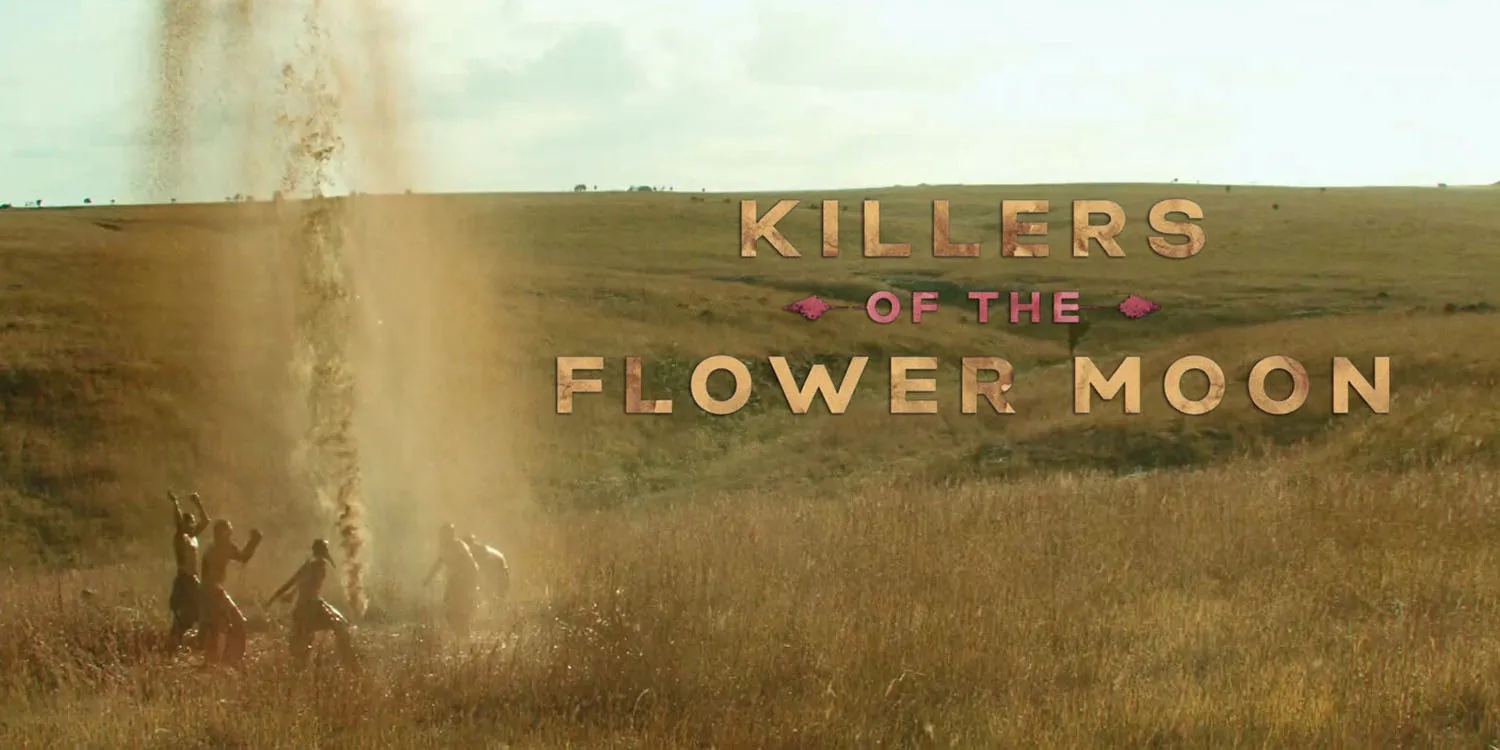| My rating | IMDb | Rotten Tomatoes | ||
|---|---|---|---|---|
| Critics | Audience | Critics | Audience | |
| 9/10 | 90/100 | 8.2/10 | 92% | 84% |
“Who lives, who dies, who tells your story?” That’s the question proposed to the audience at the end of Hamilton, the hit Broadway musical that tells the story of Alexander Hamilton and other key people from U.S. history. And that’s the same reflection that Martin Scorsese makes in Killers of the Flower Moon, his latest epic movie, with a runtime of 3h26min.
History is often told from the point of view of people who had power at the time, with other points of view being either ignored or just completely erased. The 2017 book Killers of the Flower Moon: The Osage Murders and the Birth of the FBI that inspired the movie is proof of that. Journalist David Grann investigates the murders of the Osage people that happened in the 1920s in Oklahoma and he struggles to find out exactly what happened back then and why it took so long for something to be done about it.
The Osage people had bought a piece of land that initially had seemed worthless, with hopes that they would be able to live there without fear of being forced out again. A few years later, however, oil was found underneath it and the Osage became vastly wealthy very quickly. That amount of money surely attracted people to the region and many Osage started mysteriously dying shortly thereafter.
As the title of the book suggests, it focuses mainly on the FBI investigation and its perspective about the cases. Scorsese, however, shifts the main characters of the story and puts the marriage between Ernest Burkhart (Leonardo DiCaprio) and Mollie Burkhart (Lily Gladstone) at its center.
That change made the story even more interesting because the audience witness not only how Ernest is manipulated by his uncle William Hale (Robert De Niro), who was interested in getting every possible inheritance the Osage had, but also how Mollie stands by Ernest despite clear signs that he was involved in the deaths of her own family members (her sisters and her mother). Did she know and chose to ignore it? Or could she not see it because of her genuine love for Ernest?
Lily Gladstone’s performance is so captivating that it’s hard to tell what she’s thinking and why her character does what she does. There are many powerful scenes throughout, but the climax of the movie, a scene between her and Leonardo DiCaprio in the third act, is what cements her as the frontrunner, at least for now, for the Oscars.
Leonardo DiCaprio is also a delight to watch, with a heavy accent and a frown glued to his face the whole movie. His character is part of something awful yet he manages to make the audience feel bad for him at a couple of moments in the film.
Robert De Niro was also good as the main villain and it was great to finally see him and DiCaprio together on screen after they’ve been individually collaborating with Scorsese for years.
As for the rest of the cast, one of the biggest flaws of the movie is the criminal underuse of Jesse Plemons, who plays the FBI investigator and enters the story way too late. John Lithgow also is barely in it and he does a good job as the prosecutor. However, the same cannot be said about Brendan Fraser, who plays the defense attorney. His line deliveries were so wildly different than anyone else’s that it seemed like he was in a completely different movie. The audience at my screening laughed at his character and that probably was not the film’s intention in such tense scenes.
The story itself was well told, with a great and clever ending, but there were some points that could have been better explained. There’s a scene early on between Robert De Niro and Leonardo DiCaprio that could have solved these problems. Since Ernest had just arrived, his uncle could have taken the time to explain to him (and to the audience) how exactly the money went to the Osage and how they had access to it, instead of just saying there was a lot of money and giving him a book about the Osage.
The score by Robbie Robertson was precise and very effective, helping with the pacing of the movie.
Killers of the Flower Moon, by Martin Scorcese, is an extremely powerful and poignant film that proves that anyone can both legitimately tell any story and be mindful that some pieces of it might be missing. So it is up to the audience to understand that and reflect on how history should be remembered and told moving forward.




